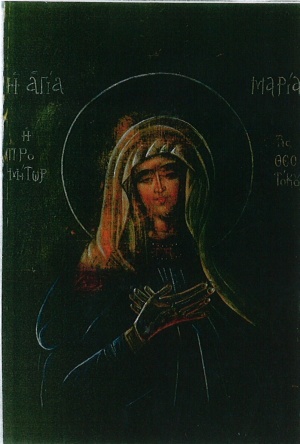Difference between revisions of "The miracle in Syria"
m ({{stub}} - You can help contribute to this article by 'cleaning it up' :-)) |
|||
| Line 1: | Line 1: | ||
| − | {{ | + | {{stub}} |
The '''Miracle in Syria''' was first reported in December 2004 when a Saudi Arabian muslim man appeared live on TV, the Internet, radio, various printed media and pamphlets in Saudi Arabia, Syria, Palestine and various other countries. One of the | The '''Miracle in Syria''' was first reported in December 2004 when a Saudi Arabian muslim man appeared live on TV, the Internet, radio, various printed media and pamphlets in Saudi Arabia, Syria, Palestine and various other countries. One of the | ||
Revision as of 00:13, April 29, 2008
The Miracle in Syria was first reported in December 2004 when a Saudi Arabian muslim man appeared live on TV, the Internet, radio, various printed media and pamphlets in Saudi Arabia, Syria, Palestine and various other countries. One of the
Interfax report
Headline of the Interfax story was A dismembered Arab sheikh raised from the dead after visiting an Orthodox convent.
- One of the Saudi Arabia sheikhs ‘rose from the dead’ after visiting Panagia Saidnaya [“Our Lady” in Syriac], an old convent near Damascus, the Trud daily writes on Friday.
- …According to the newspaper, the sheikh and his wife could not have children. They decided to go on their last journey together to Syria to venerate local Muslim shrines. One taxi-driver there advised them to visit the Sidnay Convent with its miracle-working Icon of the Mother of God, which often helped to childless families.
The sheikh and his wife took the driver’s advice, and shortly thereafter the wife conceived. Nine months on, the sheikh returned to Syria in order to make a donation to the convent, and was picked up at the airport by the same driver. However, the driver knew that his passenger was loaded, and so he and two friends chopped the sheikh up and placed the remains in the boot of the car. But all did not go according to plan:
- After a few kilometers the car suddenly stalled. A man who was driving by offered his help, but it was rudely rejected. But this Syrian felt something was wrong and called to the police, who came and caught the three accomplices unawares.
- They all experienced an even greater shock after they opened the boot. The motionless and blooded body suddenly began to stir, then revived and stood up slightly rocking. The first words he said were: ‘This same Panagia has just finished sewing up my neck here…’
Ethnikoi article
A few more details are available at the website Ethnikoi, where an English-language account has been compiled by Archimandrite Nektarios Serfes of Boise, Idaho (here the recipient of the miracle is just a "Saudi Arabian", rather than a sheikh):
- The Saudi Arabian went to a medical facility to undergo examination by doctors and medical examiners who confirmed and attested that the stitching was done very recently, thereby validating the miraculous event. The stitches were, and still are, obvious. When the Saudi Arabian came out of the car's trunk, he had the appearance, literally, of just having been refabricated (put back together) to which he continuously confessed that the PANAGIA had rejoined his body and resurrected him with the help of her Son.
- Immediately after this, the Saudi Arabian called his relatives to come to Syria and they all went together to the monastery of Panagia Saidnaya and offered up prayers, praises, and glorification, and instead of the initial gift of $80,000 US (which was promised), he gave $800,000 US to the Theotokos [the “God-Bearer", i.e. Virgin Mary]. Today, as this man relates the details of that overwhelming miracle, he starts his narration with "When I was a Moslem this happened to me" this indicating he is not longer a Moslem, as neither is his family.
See also
External link
- This is the Miracle by Archimandrite Nektarios Serfes, p 4. All Saints website
- Non-orthodox Discussion page
- "Panagia the Surgeon" (Greek and English) - From the Brotherhood of the Holy Sepulcher, Patriarchate of Jerusalem. By Father Ignatios, Abbot, Holy Monastery of The Shepherds Bt Ahur-Bethlehem and compiled by Archimandrite Nektarios Serfes, Boise, Idaho USA.
- - Tradition is that this monastery has been founded over property owned by St. Anna, inheritance from her family. This accounts for the icon of her mother, St. Mary.
